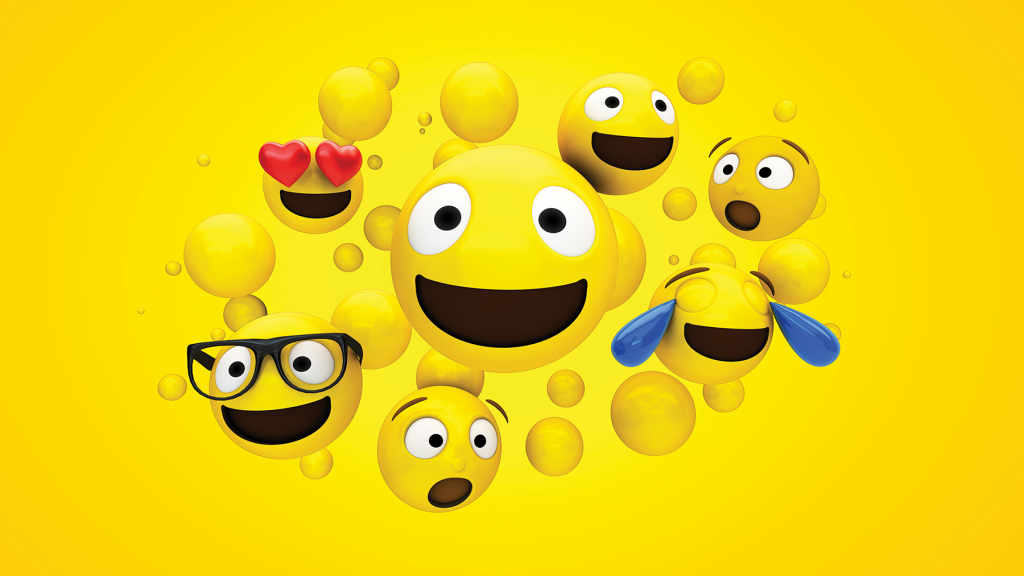Why Do Customers Engage?
Ways to Keep People Feeling Good About Spending Money With Us

by Howard McAuliffe, Partner, Pinnacle Entertainment Group
In short, customers engage with us because it feels good to do so. Of course, key to making a customer feel this way is having good food, fun games and entertainment, as well as great customer service.
When these essentials exist, our facilities are a great place for groups and families of all ages to have fun together. Without those essentials, nobody feels good about spending money. The greater question is: What can we do to deepen the relationship and good feelings customers have when interacting with our brands? There are many ways to do this, but I’m going to focus on three: generating excitement with hot products like Fortnite and VR; distinguishing trends from fads using emojis as a mini-case study; and ensuring customers feel virtuous instead of guilty about spending money with us (a concept that may seem a bit abstract at first).
Hot Products
Licensed products can be great excitement generators, however very few are worth the extra cost. As a crane operator, we made a lot of money from the first Pokemon craze, as well as Beanie Babies. However, we found that we made the most money by having good quality, themed generic product which, due to the lower price point, allowed us to have a higher win rate –– that means more happy, winning customers.
The same basic principle applies for redemption, except there is more space for multiple items, as well as the ability to charge different ticket amounts, which allows for the profitable use of more licensed product than with cranes. This winter, we should see more options for licensed Fortnite products. Much like Minecraft a few years ago, Fortnite is hot and should reliably create excitement. Look for products this December leading into the holiday season. Nobody has a crystal ball, but Fortnite products should be hot for quite a while and will be highly marketed around Christmas.
Virtual reality is similar to a hot license in that it generates excitement and brings new customers. The ROI in many community-based centers for VR is above average, but not exceptionally good. However, VR does create a peak excitement experience and we are seeing it add sales to the overall game room by bringing new customers. By tracking year to year sales and controlling for variables, we can see that systems like Hologate are not only creating an additional spend, but are also increasing the sales of the game room.
Having the hottest current licensed product, as well as the latest technologies, are ways to generate excitement, and therefore increase the positive feeling of engaging with us.
Emoji is Forever
Three years ago, I was in China with a colleague sourcing product and I asked, “What are you bringing in for emoji next year.” She said, “Don’t you think emoji is over?” At the time, I thought we had another year of the products being popular, not realizing that emoji is here to stay. My colleague and I were both looking at emojis as a novelty, when in fact they are becoming embedded in our culture. Emoji’s allow us to communicate digitally more quickly, humorously and cross culturally. In fact, there are even mini-languages created using emoji. Groups of people are petitioning to have their symbol added to the official library. New inductees include: red heads (maybe now nobody will accuse them of lacking a soul), same sex couples and bald people.
Emoji is a trend, not a fad. The ability to recognize trends as distinct from fads will benefit us, but it’s certtainly easier said than done! Using trends like emojis in signage and marketing will help reach younger consumers, and increasingly older ones, in a unique and entertaining way. Understanding mass market trends can inform how we interact with our customers, and help build deeper feelings like comfort, fun and acceptance when they interact with us.
Feeling Guilty?
I have to admit, I groaned a little when I was reading about the trend towards focusing on whether customers feel good or guilty when engaging with a brand. At first, I thought it was a little over the top to think of people feeling guilty about purchasing a product or service like clothing, food, toys, or visiting an FEC or playing a crane. However, since reading this, I’ve noticed the concept come up frequently, often in terms of environmental consciousness.
As examples, “packageless” stores are opening, people are bringing their own, resuable bags to the grocery stores to reduce waste and travel companies are promoting the use of reusable water bottles and water treatment instead of bottled water in throw-away packaging.
In an article by Reuters titled “Burberry Ends Bonfire of the Luxuries” (www.reuters.com/article/us-burberry-strategy/ burberry-ends-bonfire-of-the-luxuries-after-waste-outcry-idUSKCN1LM0MU), they say luxury brands are increasingly stopping the use of real fur, as well as the policy of destroying unsold inventory. In the past, luxury brands limited the supply of discount products (which is what happens when inventory isn’t sold) by simply destroying it. Now, consumers aware of this are pressuring brands that waste intentionally. This pressure is stronger, apparently, than the exclusivity high-end brands have traded on for years.
How does this apply to our industry? First of all, I think we’re already good at engaging customers in a positive experience they can –– and do –– feel good about. We provide fun environments that can be a shared experience for groups of nearly any demographic. This is a big deal. There aren’t many places where multiple generations can share recreation together. Increasingly, we offer quality food, including healthy options. We also have lots of non-screen games that require physical activity. All of this increases the positive feelings of engaging with us.
But of course, there’s always room for improvement and I believe we’ll see the market demand we make changes in the future. For example, many of the prizes we offer are not the most environmentally friendly. Also, most of the birthday parties I attend for my 6-year-old are focused on positive activities like gymnastics, conducting a science experiment or creating a craft. We’re actively working to implement these types of activities into FECs.
Focusing on retail market movements will help identify what consumers are demanding and allow us to make sure we’re offering an experience that makes the customer feel good about spending money with us.
Howard McAuliffe loves to imagine and implement new products, business models, and ideas, and is a partner in Pinnacle Entertainment Group Inc. He’s an industry veteran who got his start in the business when he was just 16 and has 20 years of expertise in product development, as well as FEC and route operations. Howard’s wife Reem and young son Sami are the center of life outside of work. When he’s not working, Howard can be found enjoying the outdoors, hiking, fishing and mountaineering. Traveling anywhere new or to old favorites like the American West is a passion. Readers can visit www.grouppinnacle.com for more information or contact Howard at howardmc@grouppinnacle.com, he welcomes positive as well as constructive feedback and counterpoints.

